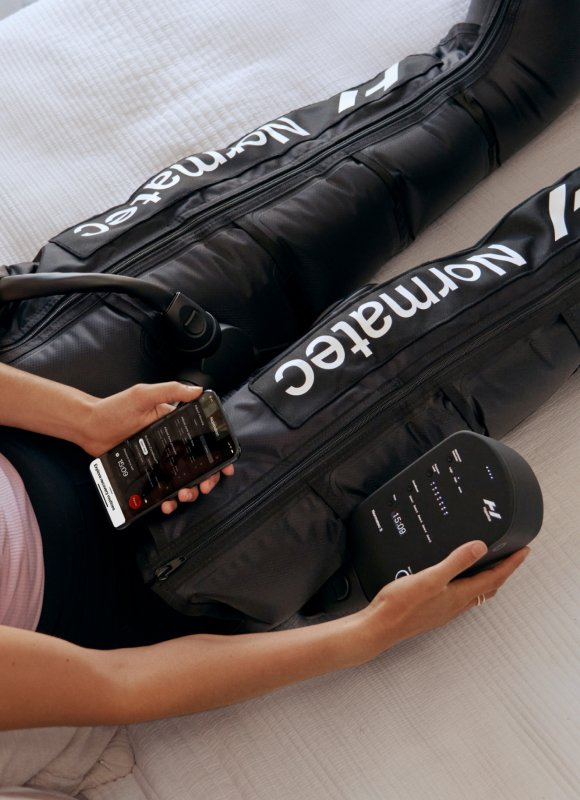
What is compression therapy?
Compression therapy increases blood flow in a given area by applying controlled pressure. Pressure can be applied via a compression wrap or a pneumatic device. Pneumatic compression sleeves have multiple compartments that are inflated in sequence to facilitate blood flow. They are most commonly used on the legs but there are also attachments for the upper extremities and hips. As the sleeves inflate, deoxygenated blood gets pumped back to the heart. When they deflate, oxygenated blood flows into the affected muscles. Compared to the prolonged static pressure of a compression wrap, dynamic compression has been shown to yield greater benefits.
This modality works in three distinct ways. First, it utilizes a pulsing action which mimics the pump of a muscle to facilitate the movement of fluids in the body. Secondly, static pressure is incorporated to mimic the one-way valves in veins. This encourages the natural flow of fluids by preventing backflow. Third, the sleeves have a distal release feature which ensures that each section of the extremity has enough time to rest in between the cycles of static pressure.
What are the benefits of IPC therapy?
Initially, IPC therapy was used for post surgical patients who remained inactive while recovering to prevent the development of deep vein thrombosis, a blood clot that could be life threatening. More recently, IPC therapy has been utilized by athletes. One of the main benefits of compression therapy is recovery. After a workout, there is an increase in inflammation of the affected muscles. Exercise causes microtears in muscles which the body addresses by sending blood and fluid to deliver the necessary nutrients for proper healing. Compression therapy helps break up and distribute this fluid in addition to clearing the lactate produced by the muscles. This will reduce stiffness and soreness following the workout. This helps to maintain range of motion and speed up recovery. Furthermore, compression boots can help reduce swelling caused by injury or conditions like lymphedema.
For which conditions would compression therapy not be appropriate?
Compression therapy is generally safe for most people, however, it would not be appropriate for people with any of the following conditions:
- Open wounds or sutures from a recent procedure
- Cardiovascular diseases such as severe atherosclerosis, ischemic vascular disease, or congestive cardiac failure
- Pulmonary edema
- Lymphangiosarcoma
Anton N. Sidawy MD, MPH, Rutherford’s Vascular Surgery and Endovascular Therapy, 2019, https://www.sciencedirect.com/topics/medicine-and-dentistry/compression-therapy
Cleveland Clinic, Intermittent Pneumatic Compression (IPC) Device, https://my.clevelandclinic.org/health/treatments/14791-intermittent-pneumatic-compression-ipc-device
https://hyperice.com/get-normatec/
-Mia Ricciardi, Lead Aide

Comments
I am looking for compression therapy for our patient. We are CA based and need to order a patient some compression therapy for home. Can you help me with some kind of information. Is insurance accepted or is it self pay? Please and thank you. Linda
By linda